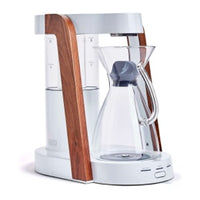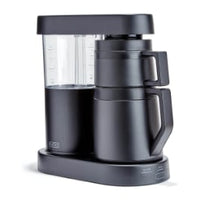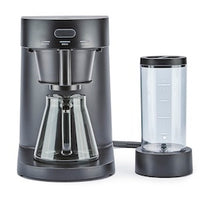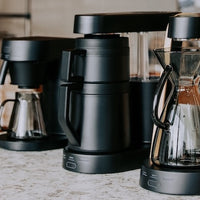Unlock Rich Flavor with These Expert Coffee Brewing Techniques
Coffee brewing is an art and a science, blending technique with personal preference. Whether you are a seasoned barista or a casual coffee drinker, understanding the nuances of coffee brewing techniques can significantly enhance your daily cup. This article will explore essential brewing techniques, focusing particularly on the importance of brewing temperature and its impact on coffee quality.
Understanding Coffee Brewing Techniques
Coffee brewing techniques encompass various methods used to extract flavor from coffee grounds. These techniques can range from traditional methods like French press and drip brewing to more contemporary styles such as pour-over coffee. The brewing process is not just about the method; it involves several variables including grind size, water quality, and notably, brewing temperature.
The Role of Brewing Temperature
Brewing temperature is one of the most critical factors that influence the flavor profile of coffee. The ideal temperature for brewing coffee typically ranges from 195°F to 205°F (90°C to 96°C). This range is essential for optimal extraction, allowing the water to dissolve the desirable flavors while minimizing undesirable compounds.
-
Under-extraction occurs when water is too cold, leading to a sour taste as the coffee's acids are released without the full flavor profile.
-
Over-extraction happens with water that is too hot, resulting in bitterness from the extraction of undesirable compounds such as tannins.
Maintaining the correct brewing temperature is vital for achieving a balanced and flavorful cup of coffee. Different coffee beans may have slightly different optimal temperatures, so experimentation can yield unique results.
Common Mistakes with Brewing Temperature
Many coffee enthusiasts overlook the significance of brewing temperature, leading to disappointing results. Here are some common mistakes to avoid:
-
Using boiling water: Many people assume that boiling water is best for brewing coffee. However, boiling water can scorch the coffee grounds, leading to a bitter taste.
-
Not preheating equipment: Cold equipment can lower the water temperature significantly. Preheating your coffee maker, French press, or pour-over dripper ensures that the water remains within the optimal range.
-
Ignoring water quality: The mineral content of the water can affect extraction. Hard water may lead to over-extraction while soft water may result in under-extraction.
By addressing these common pitfalls, you can significantly improve your coffee brewing results.
Top Coffee Brewing Techniques to Master
There are several coffee brewing techniques to choose from, each offering a unique flavor profile and experience. Below are some of the most popular methods that every coffee enthusiast should explore:
-
Pour-Over Coffee
-
This method allows for precise control over brewing variables. It involves pouring hot water over coffee grounds in a filter, resulting in a clean and flavorful cup. The key is to use a consistent pouring technique to ensure even saturation of the coffee grounds.
-
-
French Press
-
The French press method involves steeping coffee grounds in hot water and then pressing down a plunger to separate the grounds from the liquid. This technique produces a full-bodied coffee with rich flavors. Experimenting with steeping time can yield different taste profiles.
-
-
Aeropress
-
The Aeropress is a versatile brewing device that combines immersion and pressure. It allows for experimentation with brewing time, water temperature, and grind size. The result is a concentrated coffee similar to espresso, making it a favorite among coffee enthusiasts.
-
-
Cold Brew
-
Cold brew coffee is made by steeping coarse coffee grounds in cold water for an extended period, typically 12 to 24 hours. This method produces a smooth, less acidic coffee that is perfect for hot weather. Understanding the grind size and steeping time is essential for optimal flavor.
-
-
Espresso
-
Espresso is made by forcing hot water through finely-ground coffee under high pressure. This technique creates a concentrated coffee shot with a rich crema on top. Mastering espresso requires attention to grind size, tamping pressure, and brewing time.
-
Tips for Perfecting Your Brewing Technique
To enhance your coffee brewing experience, consider these practical tips:
-
Invest in Quality Equipment: A good grinder and a reliable brewing device can make a significant difference in the final cup. Look for burr grinders that provide a consistent grind size.
-
Measure Your Coffee and Water: Consistency is key. Use a scale to measure coffee and water for precise brewing ratios. A common ratio is 1:15 (1 part coffee to 15 parts water) for most methods.
-
Experiment with Grind Size: The grind size can dramatically affect extraction. Finer grinds work well for espresso, while coarser grinds are suitable for French press and cold brew.
-
Control Water Quality: Use filtered water to avoid off-flavors from tap water. The mineral content can also influence taste, so consider using water with balanced mineral levels.

The Importance of Consistency in Brewing
Consistency is critical when it comes to coffee brewing techniques. Small variations in temperature, grind size, or brewing time can lead to significant changes in flavor. Here are several ways to ensure consistency in your brewing process:
Establishing a Brewing Routine
Developing a brewing routine can help maintain consistency. This includes:
-
Using the same equipment: Stick to one brewing method and use the same tools to avoid variations in flavor.
-
Following a recipe: Keep track of your coffee-to-water ratios, grind sizes, and brewing times. This will allow you to replicate successful brews.
Keeping Equipment Clean
Regular maintenance of your coffee equipment is essential for consistent flavor. Residual oils and coffee particles can taint future brews. Ensure that:
-
Coffee makers and grinders are cleaned regularly: This prevents the buildup of oils and residues that can alter the taste of your coffee.
-
Water reservoirs are emptied and dried: This avoids stagnant water, which can impart unwanted flavors.
Conclusion: Mastering Coffee Brewing Techniques with Ratio Coffee
Understanding and applying effective coffee brewing techniques can significantly enhance your coffee experience. From optimizing brewing temperature to mastering various brewing methods, the journey to a perfect cup is filled with opportunities for exploration and refinement.
For those looking to elevate their coffee experience without compromising on style and functionality, we invite you to visit our website or contact us for more information. Discover how Ratio Coffee can help you unlock rich flavors and enjoy the perfect brew every time.
 Ratio Eight S2
Ratio Eight S2
 Ratio Eight Original
Ratio Eight Original
 Ratio Six
Ratio Six
 Ratio Four
Ratio Four
 Compare Machines
Compare Machines






